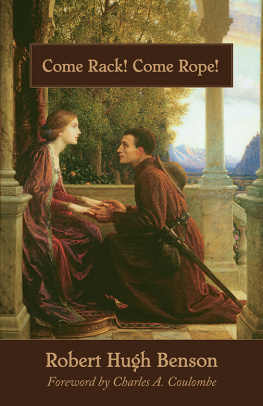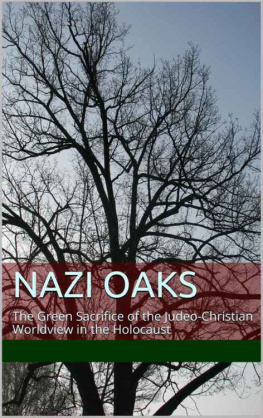Elizabeth P. Benson - Ritual human sacrifice in Mesoamerica : a conference at Dumbarton Oaks, October 13th and 14th, 1979
Here you can read online Elizabeth P. Benson - Ritual human sacrifice in Mesoamerica : a conference at Dumbarton Oaks, October 13th and 14th, 1979 full text of the book (entire story) in english for free. Download pdf and epub, get meaning, cover and reviews about this ebook. City: Washington, year: 1984, publisher: Dumbarton Oaks, genre: History / Science. Description of the work, (preface) as well as reviews are available. Best literature library LitArk.com created for fans of good reading and offers a wide selection of genres:
Romance novel
Science fiction
Adventure
Detective
Science
History
Home and family
Prose
Art
Politics
Computer
Non-fiction
Religion
Business
Children
Humor
Choose a favorite category and find really read worthwhile books. Enjoy immersion in the world of imagination, feel the emotions of the characters or learn something new for yourself, make an fascinating discovery.

- Book:Ritual human sacrifice in Mesoamerica : a conference at Dumbarton Oaks, October 13th and 14th, 1979
- Author:
- Publisher:Dumbarton Oaks
- Genre:
- Year:1984
- City:Washington
- Rating:5 / 5
- Favourites:Add to favourites
- Your mark:
- 100
- 1
- 2
- 3
- 4
- 5
Ritual human sacrifice in Mesoamerica : a conference at Dumbarton Oaks, October 13th and 14th, 1979: summary, description and annotation
We offer to read an annotation, description, summary or preface (depends on what the author of the book "Ritual human sacrifice in Mesoamerica : a conference at Dumbarton Oaks, October 13th and 14th, 1979" wrote himself). If you haven't found the necessary information about the book — write in the comments, we will try to find it.
Elizabeth P. Benson: author's other books
Who wrote Ritual human sacrifice in Mesoamerica : a conference at Dumbarton Oaks, October 13th and 14th, 1979? Find out the surname, the name of the author of the book and a list of all author's works by series.
Ritual human sacrifice in Mesoamerica : a conference at Dumbarton Oaks, October 13th and 14th, 1979 — read online for free the complete book (whole text) full work
Below is the text of the book, divided by pages. System saving the place of the last page read, allows you to conveniently read the book "Ritual human sacrifice in Mesoamerica : a conference at Dumbarton Oaks, October 13th and 14th, 1979" online for free, without having to search again every time where you left off. Put a bookmark, and you can go to the page where you finished reading at any time.
Font size:
Interval:
Bookmark:

A Conference at Dumbarton Oaks
OCTOBER I3TH AND I4TH, 1979
Elizabeth P. Benson, Organizer Elizabeth H. Boone, Editor
Dumbarton Oaks Research Library and Collection Washington, D. C.
1984, English, Conference Proceedings edition: Ritual human sacrifice in Mesoamerica : a conference at Dumbarton Oaks, October 13th and 14th, 1979 / Elizabeth P. Benson, organizer ; Elizabeth H. Boone, editor.
Subjects
Indians of Mexico -- Rites and ceremonies -- Congresses.
Mayas -- Rites and ceremonies -- Congresses.
Aztecs -- Rites and ceremonies -- Congresses.
Human sacrifice -- Mexico -- Congresses.
Human sacrifice -- Central America -- Congresses.
Contents
Ritual human sacrifice in Mesoamerica: an introduction / Jacques Soustelle Human sacrifice among the Classic Maya / Linda Schele
Maya heart sacrifice: cultural perspective and surgical technique / Francis Robicsek and Donald Hales
Human sacrifice in the Books of Chilam Balam of Tizimin and Chumayel / Munro S. Edmonson
In search of the Mountain of Foam: human sacrifice in eastern Mesoamerica / S. Jeffrey K. Wilkerson
The Templo Mayor of Tenochtitlan: economics and ideology / Eduardo Matos Moctezuma Memory clothing: costumes associated with Aztec human sacrifice / Patricia Rieff Anawalt Ochpaniztli in historical perspective / Betty Ann Brown
Human sacrifice in the Old World and the New: some similarities and differences / Nigel Davies
Overview: Mesoamerican human sacrifice in evolutionary perspective / Arthur Demarest.
ISBN
0884021203
Ritual Human Sacrifice in Mesoamerica: an Introduction
JACQUES SOUSTELLE
ECOLE DES HAUTES ETUDES EN SCIENCES SOCIALES, PARIS
I N mesoamerica, human sacrifice is firmly linked to Aztec culture and has been considered one of the main features of Aztec ideology. But the late Maya of Yucatan, among whom Central Mexican influences were pervasive, also sacrificed humans, as did the indigenous people of Oaxaca, if we believe the testimony of the Mixtec codices. The question that arose, and which indeed became one of the major themes of this Dumbarton Oaks conference, however, is whether the Classic Maya of the Peten lowlands and the Usumacinta region also practiced ritual sacrifice, and if so, how widely, how often, and by which means.
The rather too idyllic image of the early Maya as the Greeks of the New World (although the Greeks, after all, with their refined culture, also appear as extremely warlike and not altogether innocent of human sacrifice, as Nigel Davies rightly points out) has been attacked during the last few years by such scholars as Michael Coe. In this volume, Francis Robicsek and Donald Hales quote Coe, saying that Classic Maya culture showed an obsession with torture and sacrifice. I wonder, however, whether such an extreme positionwhich is symmetrical to Morleys and Thompsons probably exaggerated idyllic viewsis clearly demonstrated by Robicsek and Haless paper or by the very interesting paper of Linda Scheie. Both supporting and negating data are brought out by archaeology and the study of glyphic inscriptions.
Supporting evidence for Maya human sacrifice are the painted scenes on Classic period ceramics published by Persis Clarkson and Michael Coe, the sculptures of Stelae II and 14 at Piedras Negras, and, of course, the battle and judgment scenes of the Bonampak murals. To these obviously Classic elements, there may be added representations from the Postclassic Codices Dresden and Tro-Cortesianus. I would not like to put too much
emphasis on the well-known graffiti at Tikal (i.e. the death of an individual tied to a scaffold and killed by arrows), as we do not really know when, why, or by whom it was made.
Although the excision of the heart (which was to become the most frequent method of sacrifice in Central Mexico and Yucatan in Postclassic times) is shown in some cases such as the Piedras Negras stelae, other sources point instead to death by decapitation. This is no surprise for those who have read the Popol Vuh where the lords of the Underworld kill the semidivine twins by cutting off their heads.
Now let us look at the negative evidence. Given the very high number of sculpted panels, lintels, and stelae yielded by the Classic Maya cities, it seems rather surprising that no actual scene of human sacrifice is represented. If human sacrifice was continuous and pervasive during the Classic period (Scheie), or widespread among the Classic Maya (Robicsek and Hales), why is it that it does not appear in art? War scenes, yes; blood-letting and auto-sacrifice, yes; such are themes treated by Maya artists in Bonampak and Yaxchilan. War captives are represented in many places such as Piedras Negras and Tonina. It may be that those prisoners were eventually killed in ritual sacrifice; the evidence, however, is scant.
Linda Scheies brilliant attempt to connect sacrificial rites with what she calls na events certainly casts a new light on some aspects of the blood-letting practice, but does it prove that constant and wholesale human sacrifice was linked with those ceremonies? We cannot but feel some doubts, considering that no glyph has yet been found connected with human sacrifice by heart removal (Robicsek and Hales). Munro Edmonson writes that all references to human sacrifice in the books of Chilam Balam are oblique and uncertain as far as the Classic period is concerned. Another interesting point is that nowhere in the ancient Maya area has any monument been found that can be surely interpreted as a sacrificial stone.
One fact is perfectly clear. While the Postclassic figurative arts do emphasize the heart removal of human victims (e.g. the gold disk H of the Chichen Itza cenote), Classic art is very discreet, to say the least, about this subject.
Late Yucatec culture, on the other hand, has been obviously influenced, or rather penetrated through and through, by Central Mexican ideas and customs, as was also the case of the Guatemalan highland kingdoms. Human sacrifice became so deeply rooted in those parts of the Maya area (i.e. Yucatan, Guatemala, and Chiapas) that after the Spanish conquest sacrifice continued, more or less secretly of course, during the Colonial period (in spite of the Inquisition and of heavy penalties) and even as late as the nineteenth century. Some cases are known in which the victims were crucified1 or were killed by excision of the heart and crucified (Tozzer 1941: 116).
Although sacrifice by heart removal was prevalent both in Central Mexico and the Maya area in the Postclassic, decapitation also took place, as, for instance, among the Aztecs and mainly in rites involving the deities of fertility and vegetation. That there was a stong link between decapitation and the ritual ball game is obvious when one considers the sculptures of the tlachtli at El Tajin, the Aparicio (Veracruz) stela, and the ball court reliefs of Chichen Itza. Decapitation rites may have originated in the Gulf area, perhaps among the Maya-related Huastec Indians, as suggested by Jeffrey Wilkerson.
As a matter of fact, the Ochpaniztli Aztec ritual, during which a woman considered as the impersonation or image ( ixiptla ) of the earth goddess was sacrificed by decapitation, had strong Huastec associations as well as fertility and sexual overtones. Owing to the fact that Aztec rites, as a rule, gathered quite a number of different elements into a single complex of ceremonies, this interpretation of Ochpaniztli does not conflict with the historical perspective discussed by Betty Ann Brown. There is no doubt that the sixteenth-century Aztecs were highly history-minded. It seems quite natural, therefore, that one of the many aspects of the sacrificial rites was linked with the commemoration of important events in Aztec history, in that case the well-known episode during which the Mexica sacrifice the Culhuacan rulers daughter (who had been renamed Toci and was therefore the impersonation of the earth goddess).
Font size:
Interval:
Bookmark:
Similar books «Ritual human sacrifice in Mesoamerica : a conference at Dumbarton Oaks, October 13th and 14th, 1979»
Look at similar books to Ritual human sacrifice in Mesoamerica : a conference at Dumbarton Oaks, October 13th and 14th, 1979. We have selected literature similar in name and meaning in the hope of providing readers with more options to find new, interesting, not yet read works.
Discussion, reviews of the book Ritual human sacrifice in Mesoamerica : a conference at Dumbarton Oaks, October 13th and 14th, 1979 and just readers' own opinions. Leave your comments, write what you think about the work, its meaning or the main characters. Specify what exactly you liked and what you didn't like, and why you think so.

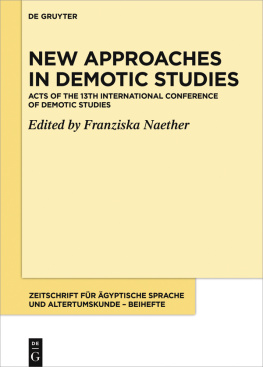
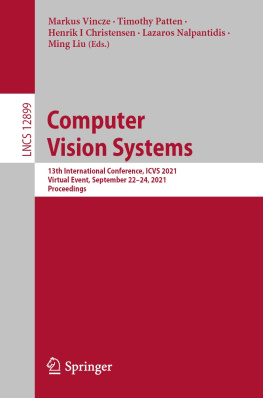
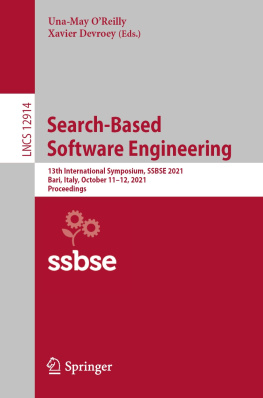

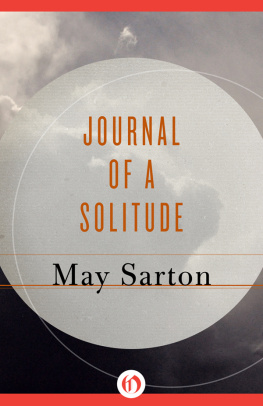
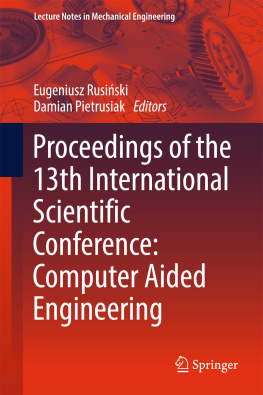
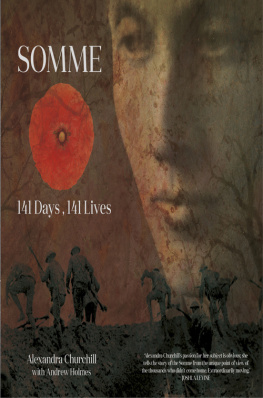

![Robert Hugh Benson [Benson - Robert Hugh Benson Collection [11 Books]](/uploads/posts/book/139831/thumbs/robert-hugh-benson-benson-robert-hugh-benson.jpg)
